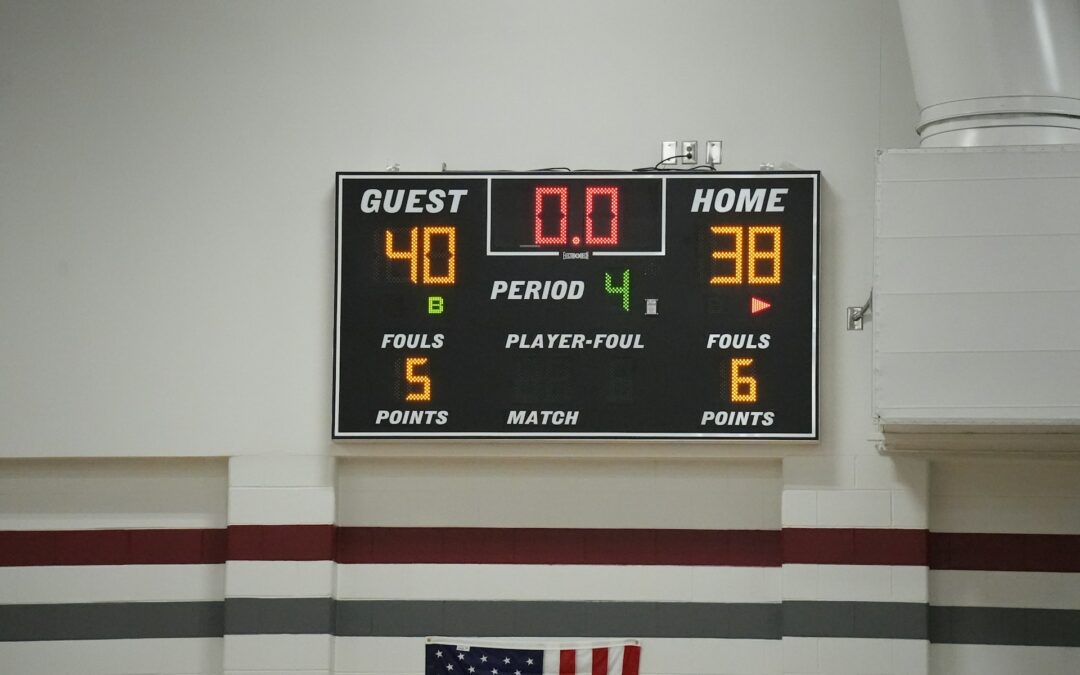Basketball, at its core, is not just a game of physical skills but also a test of mental strength, especially when it comes to dealing with pressure. As youth basketball coaches, our role transcends teaching dribbles and shots; it involves preparing young athletes to face high-pressure situations both on and off the court. Many players are ill-equipped at handling pressure in youth basketball. Here, we delve into strategies to help coaches cultivate a mindset in players that transforms pressure from a foe to an ally.
The Nature of Pressure in Youth Basketball
First, it’s essential to understand that pressure, in the context of basketball, is largely a psychological construct. It’s something that players, coaches, and indeed all of us, create in our minds. Recognizing this can empower coaches and players alike to approach handling pressure in youth basketball in a more manageable, constructive way.
Coaching Points for Handling Pressure in Youth Basketball
As coaches, we play a pivotal role in how our players perceive and handle pressure. Here are some strategies to help your team thrive under pressure:
- Lead by Example: Your players will mimic your behavior. Maintain a calm and confident demeanor during games to demonstrate how to manage stress effectively.
- Emphasize Control: Teach players to focus on what they can control—effort, attitude, and preparation. Help them understand that external pressures are beyond their control and should not impact their performance.
- Healthy Perspective on Pressure: Encourage players to see pressure as a positive force that can enhance focus and performance. Use it as an opportunity to build resilience and character.
- Visualization and Preparation: Integrate visualization techniques into your training sessions. Encourage players to imagine succeeding in high-pressure situations. This mental rehearsal can boost confidence and reduce anxiety.
- Build Confidence: Throughout the season, create an environment that fosters self-belief. Celebrate small victories and improvements to show players the results of their hard work, making them more confident in their abilities.
Joining the TeachHoops Community: A Step Towards Enhanced Coaching
TeachHoops.com offers a unique platform for coaches to share experiences and gain new insights. Learn from others who have navigated similar challenges. It’s an invaluable resource for those looking to:
- Broaden perspectives
- Refine strategies
- Enhance their leadership and motivational skills
Win the Season: Basketball Masterclass!

Key Takeaways for Handling Pressure in Youth Basketball
By expanding our understanding of these key concepts, coaches can more effectively prepare their teams to handle the pressures of the game, fostering not only better athletes but also more resilient individuals equipped to face life’s challenges.
-
Pressure as a Mindset
Understanding that pressure is not an external force but a psychological one empowers players and coaches alike. It’s a reminder that our perception of pressure can be shaped and managed through mental training and attitude adjustments. By reframing how we view challenging situations, we can turn potential stress into an opportunity for growth and excellence.
-
The Coach’s Influence
The demeanor, attitude, and reactions of a coach significantly impact how players perceive and handle pressure. A coach who remains calm and confident under stress models these essential qualities to their team. This sets a behavioral blueprint for players to emulate, demonstrating that pressure situations can be approached with composure and positivity.
-
Focus on What’s Controllable
Coaches should emphasize the importance of concentrating on aspects of the game that players can directly influence. This includes their effort levels, attitudes, and adherence to the game plan. By shifting focus away from uncontrollable factors like referee decisions or the crowd, players can channel their energy into productive actions that enhance their performance.
-
The Power of Visualization and Preparation
Regularly practicing mental visualization techniques can significantly enhance a player’s ability to handle pressure. By mentally rehearsing success in high-pressure scenarios, players build a reservoir of confidence. This mental preparation makes the imagined scenarios less intimidating when they occur in reality, as players feel they’ve “been there before.”
-
Building Confidence is Key
A supportive environment that nurtures player confidence is vital. Recognizing and celebrating each player’s progress and successes, no matter how small, builds a foundation of self-belief. Confidence comes from knowing that one has prepared well and possesses the skills needed to succeed. A confident player is more likely to view pressure as a challenge to be embraced rather than a threat to be feared.
-
Encouraging a Positive View of Pressure
Teach players to view pressure as a privilege and a sign of opportunity. High-pressure situations often arise in moments of significance, indicating that something valuable is at stake. By learning to appreciate these moments, players can shift their mindset from one of anxiety to one of excitement and motivation.
-
Continuous Learning and Adaptation
Dealing with pressure is an ongoing process that involves continuous learning and adaptation. Encourage players to reflect on their experiences in pressure situations to identify what strategies worked and what can be improved. This reflective practice fosters a growth mindset, where challenges are seen as opportunities to learn and become stronger.
Conclusion
As youth basketball coaches, our influence extends far beyond the basketball court. By teaching young athletes how to effectively manage pressure, we equip them with skills that will serve them well in all areas of life. Remember, the goal isn’t to shield them from pressure but to prepare them to face it with confidence and poise. Through leading by example, focusing on controllable aspects, and fostering an environment of confidence and preparation, we can help our players turn pressure into an opportunity for growth and excellence. Let’s embrace this challenge, for in doing so, we not only develop better basketball players but also more resilient individuals.
Related: Mastering the Art of Dribbling
Coach Unplugged Podcast:

Free Basketball Coaching Resources
If you found this useful, don’t forget to check out additional blog posts at TeachHoops.com. Also, check out TeachHoops on Facebook, Twitter, Instagram and YouTube.


